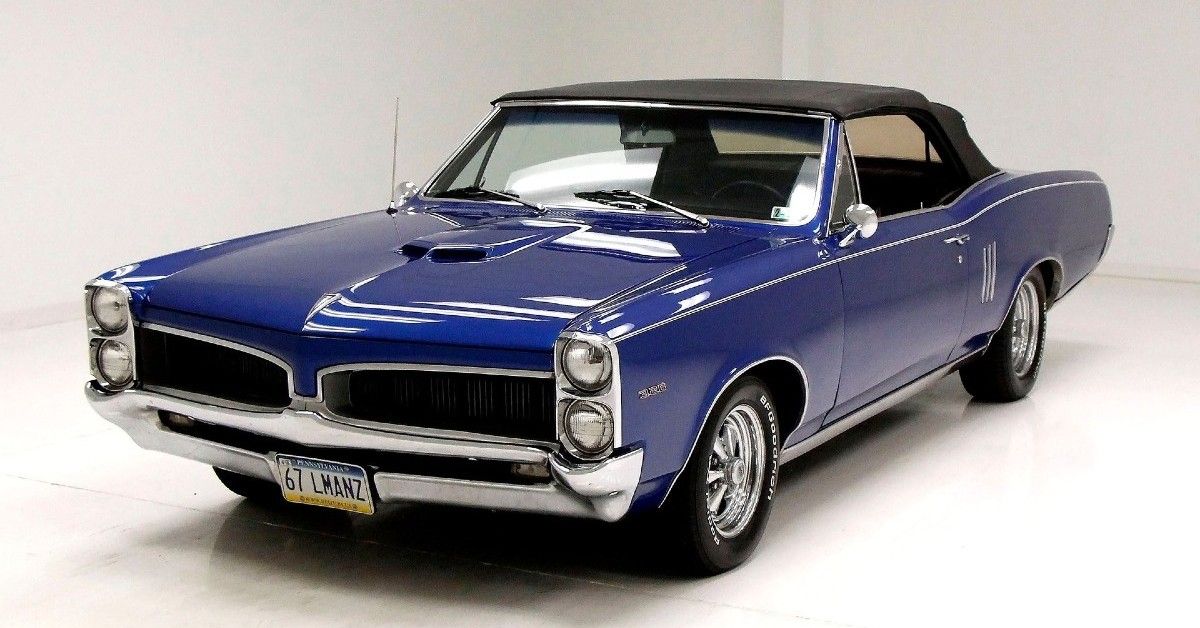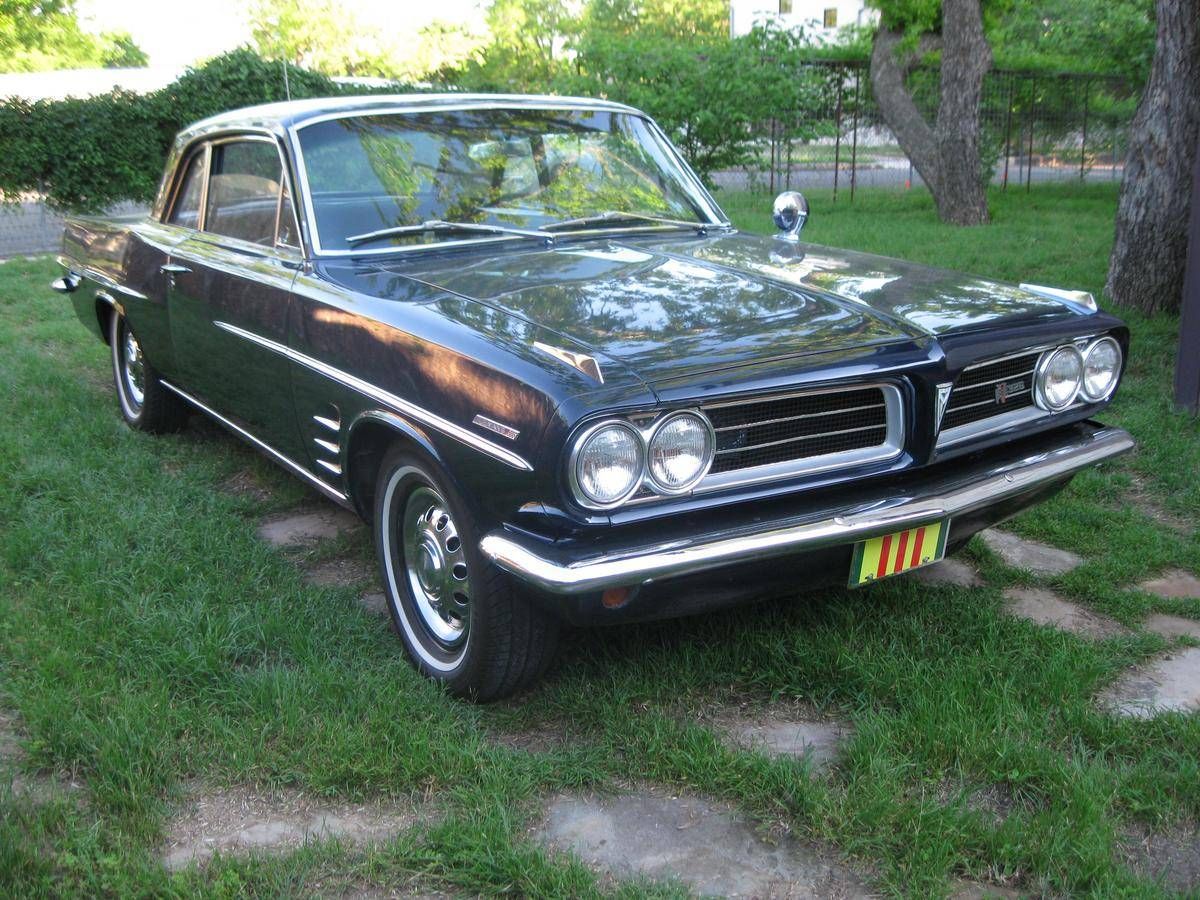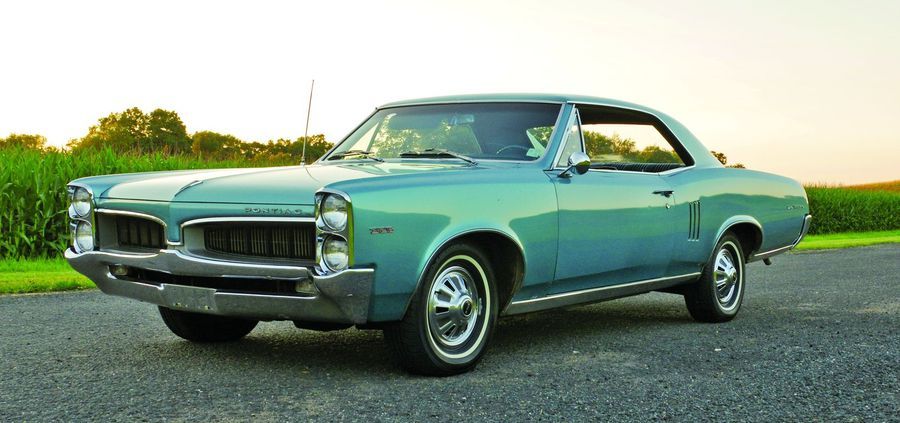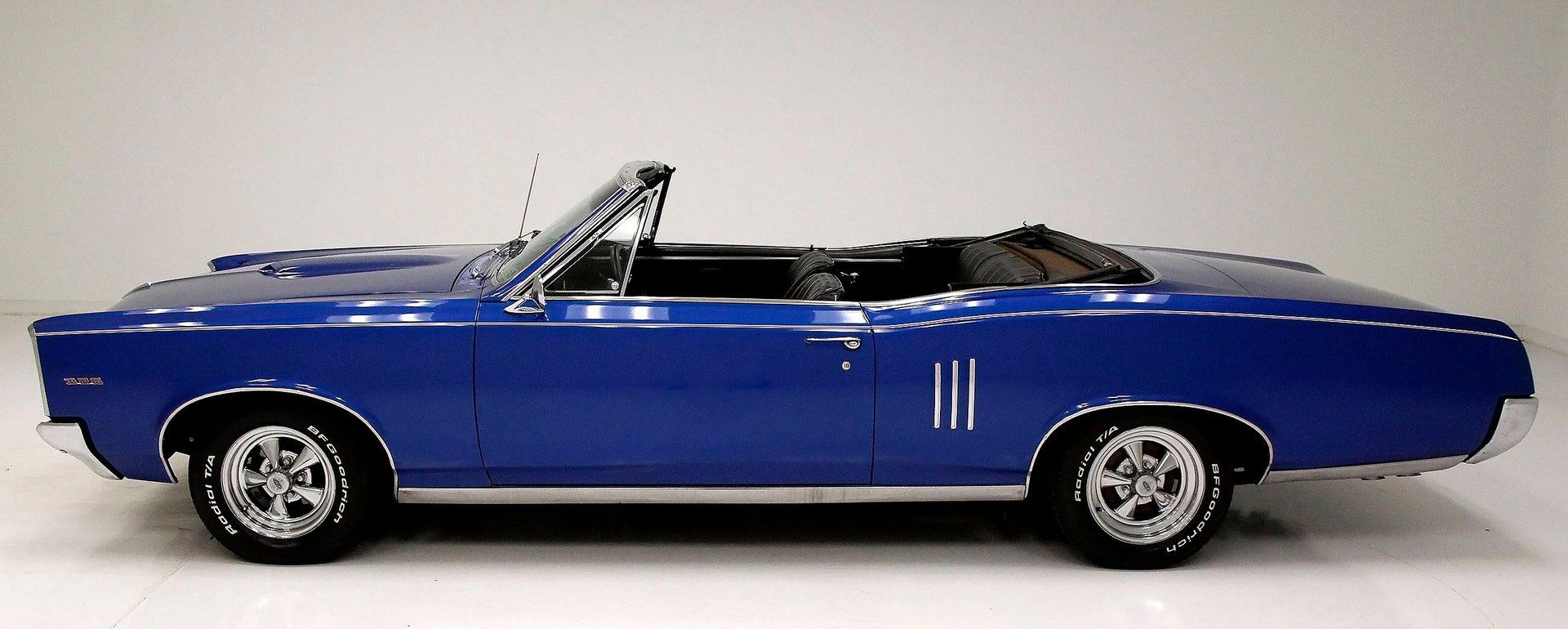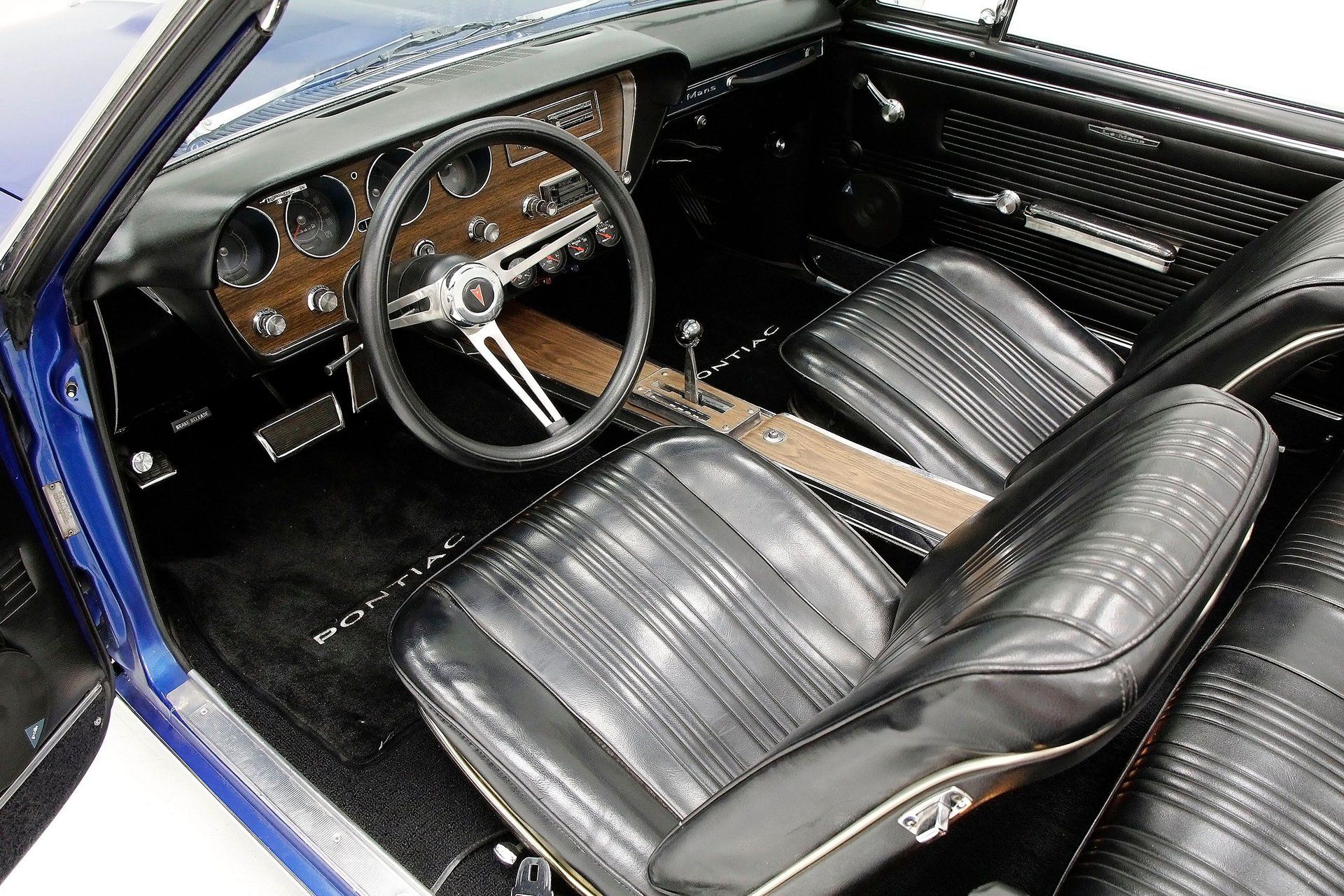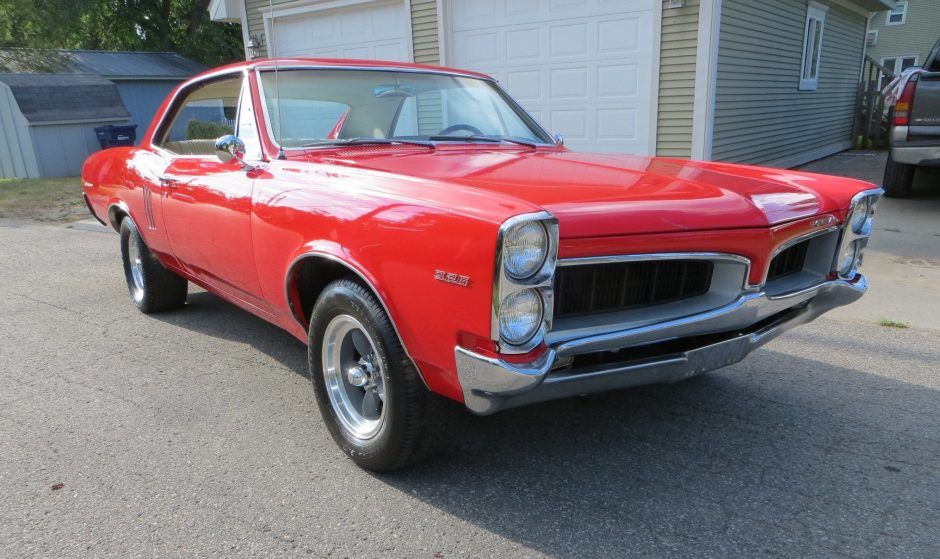We all know the classic Pontiac GTO, credited for kickstarting American obsession with muscle cars. But little is said about this classic car's origin story and that the GTO was once only a trim level offered on the Tempest and LeMans.
The Pontiac "LeMans" name was first introduced as a trim option on the 1962 Tempest platform. It was sold as the Pontiac’s luxury and sportier trim. The following year it developed into its own series, and by 1964 it matured from a senior compact Y-body into a mid-sized A-body model.
We'll now take a closer look at the 1967 Pontiac LeMans.
The second generation Pontiac LeMans was slathered with classic 60s styling; Pontiac's distinctive tunnel back, stacked headlamps and split grille. The final year of that generation, 1967, was also given GM's mandated safety equipment - making the 1967 Pontiac LeMans the sweet spot for a piece of American Muscle history.
The Pontiac Tempest LeMans
To understand the Pontiac LeMans, you have to know about the Tempest. The Tempest is really the heart of where the LeMans started.
The Pontiac Tempest’s first lifecycle was from 1960 to 1970. It was sold as the entry-level compact four-door sedan and station wagon (or Safari). Following the success of the Chevrolet Corvair, Pontiac wanted to produce an identical copy for themselves, but GM permitted them to create an entirely new and unique car. Little did they know that it would lead to one of Pontiac’s greatest achievements of all time, selling the GTO.
Built on the new unibody Y platform, the base Tempest was fitted with a four-cylinder engine and two-speed automatic gearbox making 110-140 hp. The engine was pulled from the right side of Pontiac’s 389 cubic inch V8 and marketed as the “Trophy 4.”A front engine with a rear-mounted transaxle made the “compact” Pontiac have a near-perfect 50/50 weight distribution. Combined with independent suspension on all four-wheels, the Tempest handled far better than most cars of that era.
In 1961 a trim upgrade was offered as the Tempest “LeMans” as a sportier, more luxurious coupe. The compact Pontiac was given bucket seats, and it’s own unique badging. The following year was given the option of a convertible as was as a 3.2L Inline-4 with a four-barrel carb. That could make 166 hp and 215 lb-ft of torque. The following year remained the same body style but was designated as its own model. The new Pontiac LeMans could also be optioned with the big 336 cu in (5.5L) V8 that was good for 285 hp.
Second Generation LeMans (1964 - 1967)
Due to its ever-increasing size, the second generation of the LeMans was now considered an intermediate-sized car. Judging by photos, a 1964 Pontiac LeMans certainly wouldn’t meet “compact” standards today either.
The new generation was offered on an all-new A-platform and was sold as either a two-door hardtop, coupe, or convertible. A new 215 cu in Inline-6 was introduced and a replacement for the 326 cu in V8. Later that year, a new performance package was offered, known as the “GTO.” The GTO was fitted with a 389 cu in V8 that produced either 325 hp with the four-barrel carburetor or the Tri-Power version that used three two-barrels to make 348 hp.
The second year of the second generation offered a new four-door sedan variant. The GTO trim was given even more power, plus better tires, suspension, and a four-speed Hurst floor shifter. The LeMans could be optioned with air conditioning, transistor radio, windshield washers, child-proof door locks, padded safety dash, a parking brake warning light, and seat belts.
In 1966 the GTO had finally moved out on its own. The Pontiac GTO became a separate model but kept relatively the same styling as the LeMans and Tempest. For the LeMans, a new four-door hardtop body style replaced the pillared 4-door sedan. Tunnel back rooflines were added to match the other Pontiac intermediate body styles. The LeMans base engine was given a new 230 cu in I6 with a one-barrel carburetor that made 165 hp. An optional “Sprint” package was available for the station wagon with an Inline-6 a four-barrel carburetor and made 207 hp. The Pontaic LeMans could also be equipped with one of two GM’s V8s; a two-barrel 236 cu in that made 250 hp or a four-barrel 326 V8 that made an impressive 285 hp.
The 1967 Pontiac LeMans and Tempest models only saw minor changes. Front disc brakes were now an available option, and a hood-mounted tachometer and 8-track tape player. Due to federal law, all 1967 GM’s were given a safety package that included a dual-circuit braking system, energy-absorbing steering column, wheel, and interior, shoulder belt anchors, four-way hazard flashers, and a new blinker that could be tapped for lane changes.
1967 Pontiac LeMans Pricing & Availability
The ‘67 has the distinctive Pontiac tunnel back, safety equipment, and was the last of the generation long, polarizing box-look of the 60s. Combine that with the cool look stacked headlamps and classic split grille, the 1967 model year is one of the most sought after. Right now, AutoTrader shows 5 Pontiac LeMans on sale from the year 1967, all of them with a V8 and the cheapest listing price is just under $30,000. That’s likely more expensive than Pontiac would be able to sell a new intermediate-sized car today.
Average prices of Pontiac LeMans are selling higher than other Pontiacs in that era. Prices in auctions saw a dramatic spike in 2018 and sale volumes were high until the pandemic of 2020. Auction prices of an average ‘67 LeMans in good condition was $16,175, those in perfect condition sold for as much as $50,000.
The Pontiac LeMans is a great choice if you’re looking for a classic American car that not everyone will have next weekend’s Cars & Coffee. It has great curb appeal and a good background story. The boat of a car is sure to turn heads and cost at least $10,000 less than an identical GTO. Plus, you could swap a few badges (if you’re that driver) and see who all will notice.

